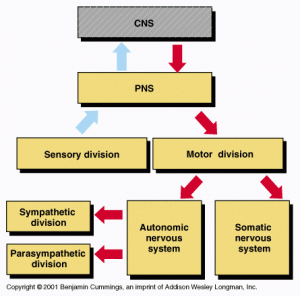We have all heard the saying ‘No Pain, No Gain’. It refers to the way you apply yourself during exercise, that is, the harder you push yourself, the greater the gains you will receive. This is true to a certain extent, I believe a more appropriate saying is ‘Know Pain, Know Gain’. Meaning, if you understand what your body is telling you, you can push yourself to your limit, without risking injury whilst getting sizable gains.
Firstly, you need to understand the language of your body. Be aware of those tight, achy, sore areas that you may have. Everyone has them, and as much as we don’t like them, there is a reason why we have them. This is the way your body communicates with your brain. They are signals indicating that these areas have either been put through some degree of physical stress, possibly overused and needing to recover. This is the role of your sensory nervous system, to relay all types of sensation (heat, cold, pleasure, pain etc) to your brain. Your brain has the role of then deciding what the appropriate response is. This is where things get complicated. Our sensory nervous system is different from person to person and from one day to another. You see, as our sensory nervous system is just a small part of our Central Nervous System. This system is responsible for all the internal housekeeping functions like breathing, digestion etc (which pretty much keeps us alive) and also receiving and responding to any external stimulus from the surrounding environment. It is a dynamic system that is always changing as the surrounding environment changes i.e. indoors vs outdoors, hot vs cold weather, sleeping vs awake, stressed vs relaxed states, rest vs activity etc. So as you can see the Central Nervous System plays a pretty big part in the way we live our lives.
So back to those tight, achy, sore areas. The reason why we have these is that your body is attempting to relay a message to you. The message may be ‘you have worked this area quite intensely, time to recover’, ‘or ‘if you continue on this may lead to something more serious’. Generally speaking, the more uncomfortable to sensation the greater the level of potential risk of injury. By understanding the meaning of these aches and pains, it gives us the opportunity to respond to them accordingly. If you give yourself the opportunity to rest, recover and heal, you will be back to your best form in ample time. If you choose to continue on and ignore these ominous signs, you are running the fine line of potential damage and possibly time off from normal activities like exercise and work.

This also applies to the office worker sitting at their desk all day. Office workers will undoubtedly have sore muscles in their neck, shoulders and back. Their muscles are working hard to hold them up against gravity for the entire day. These muscles are fatigued, stressed and overworked to the point which they are trying to communicate to your brain, that they need to be rested or need time to recover. The challenging part with desk workers is to stay completely aware of what their bodies are telling them, especially when you have a deadline to meet or your boss breathing down on you. These distractions take your focus away from you onto other matters, which may lead you to stay in a single position for too much time, eventually leading to those aches and pains that we all hope to avoid.
So the key points are;
1. Understand what your body is trying to tell you. Aches, pains and tight muscles are a sign of stress and overuse.
2. Give yourself time to rest and recover. Get up and move! Trying using ice or heat, movement, stretching or massage on these sore spots to help speed up the recovery process.
3. Stop if you feel too uncomfortable, don’t push yourself through your limits. Don’t ignore the signs as they can lead to further damage.
4. If the problem lingers on even with ample rest of recovery, then its time to seek help from your health professional.


